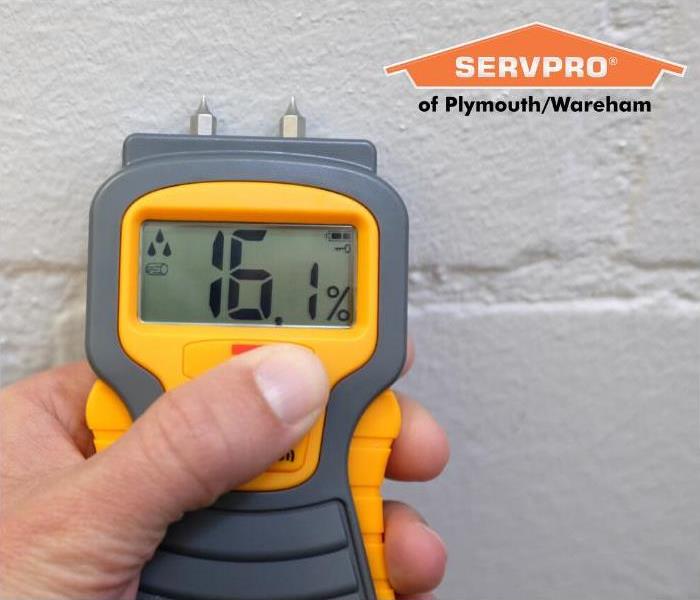Moisture Meters
1/2/2020 (Permalink)
 SERVPRO of Plymouth/ Wareham has advanced technology to make water damage "Like it never even happened."
SERVPRO of Plymouth/ Wareham has advanced technology to make water damage "Like it never even happened."
The different types of moisture meters
Moisture Meters are an important tool our Project Managers and Crew Chiefs use on a daily basis when it comes to the restoration process after a water loss. There are two types of moisture meters. There are ones that penetrate materials and ones that don’t.
Penetrating Moisture Meters have electric probes that go inside of the material you want to test for moisture, measured by electrical conductivity. The results of the reading are displayed digitally on the device.
Non-Penetrating Moisture Meters are usually used to measure moisture in content and wood materials, such as flooring and walls. Non-Penetrating moisture meters use a radio frequency, capacitance and conductivity to determine its results. These meters can indicate moisture quite far into the material.
There are also Thermo-hygrometers. They are capable of testing for GPP (grains per pound), Dew Points, and ambient temperature as well as providing a measurement of moisture in the air. Thermo-hygrometers are capable of giving our technicians useful statistics for recognizing mold risks in a structure.
Thermal Imaging Cameras are also a really neat tool that allows via a camera and digital screen to detect moisture using infrared radiation and creating an image based on such information.
SERVPRO of Plymouth/Wareham has the experience, expertise and advanced technology to properly dry out any structure. Our technicians use tools such as moisture meters to measure the relative humidity, temperature, etc. in order to have the accurate types and amounts of dehumidifiers and air movers to handle the water load in the structure- and make any water damage “Like it never even happened.”






 24/7 Emergency Service
24/7 Emergency Service